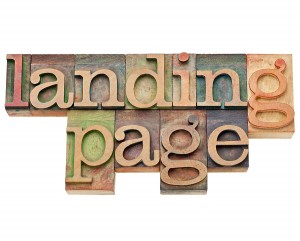Your 80/20 marketing plan
November 5, 2015
 One of the age-old rules in business is that 80% of your revenue is generated through 20% of your customer base. While the numbers may not align perfectly – the axiom is accurate. Your best customers generate the lion’s share of your earnings.
One of the age-old rules in business is that 80% of your revenue is generated through 20% of your customer base. While the numbers may not align perfectly – the axiom is accurate. Your best customers generate the lion’s share of your earnings.
In fact, over the lifetime of your relationship, your most loyal customers will spend 10x what the average customer will spend. They’re also responsible for over 70% of the total visits to your business.
Even if you didn’t know the numbers – you know how important your best customers are. Yet – 63% of marketers believe that new customer acquisition is the most important advertising goal.
A recent study of over one retail million customers looking at both their behavior and their attitudes revealed some very compelling data.
- VIP and loyalty program members are 70% more likely to spread the word about your business
- 65% actually want their favorite stores to frequently email them coupons and promotions
- The probability of making an additional sale or up selling a loyal customer is 60-70%
I’m not suggesting you stop chasing new customers but based on what we know in our gut and the data in this study, we sure need to focus a little more attention on those best customers too. Keep in mind that the average conversion rate (a new sale) from efforts aimed at new customers is less than 1%. The new ones are more price conscious, less likely to come back and pay full price and are going to require a lot of wooing to earn their return.
On the flip side, you have this group of people who has already made it clear that they choose you. They’re already in the habit of spending money with you and like how you conduct business. These are people worth investing in.
Whether you call it a loyalty program or just put together a marketing plan aimed at making your best customers feel your appreciation and love – it will pay off. This shouldn’t be a generic effort. You need to do a little homework so you actually create something of value.
First, identify who your best customers are: This sounds silly. Of course you know, right? Actually, I’ll bet there will be some surprises. Crunch the numbers to identify your best customers.
Spend some time thinking about them: Don’t just assume you know what perks or added value would mean the most to your loyal clients. Or better yet – ask them. Come up with a list of options and find out which would really put their buying into overdrive and make you their only choice of vendors.
Keep it simple: Don’t make them carry a card, memorize a customer number or jump through hoops to take advantage of your program. The average American belongs to 18 rewards programs, so your goal is to make yours the best in terms of value and the easiest in terms of use.
Do some testing and tracking: Don’t assume you’ll get it exactly right the first go around. You absolutely need to track which aspects of your effort are gaining traction and which are falling flat. Adjust accordingly.
Spread the word: Once you have it working well, you want to invite others to join. A loyalty program has two core benefits. First, it rewards your best customers and encourages them to spend more. The other benefit is that it can entice your average customer to increase their activity level.
One of the biggest marketing mistakes most businesses make is they don’t pay enough attention to their best customers because they’re too busy chasing new ones. Don’t make that mistake – it could cost you more than you want to spend.
More

 Note from Drew: Every once in awhile I like to open up the blog to a guest with a depth of expertise that I think you’ll benefit from. Here’s Jason Well’s take on landing pages.
Note from Drew: Every once in awhile I like to open up the blog to a guest with a depth of expertise that I think you’ll benefit from. Here’s Jason Well’s take on landing pages.